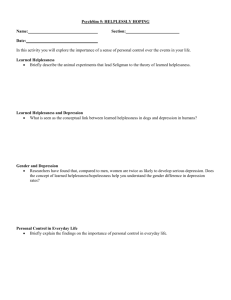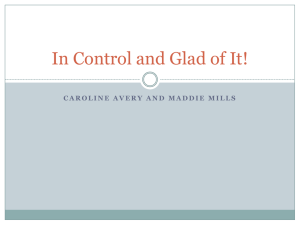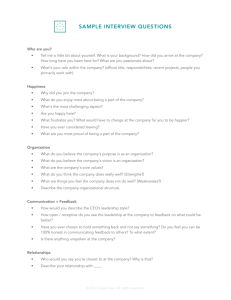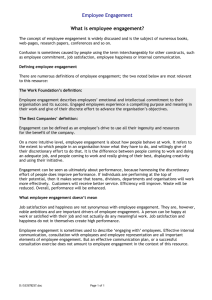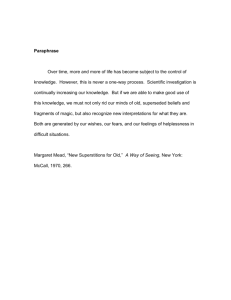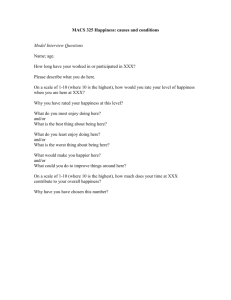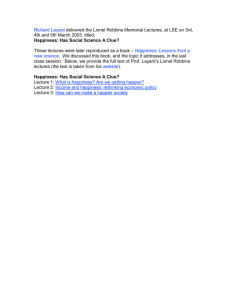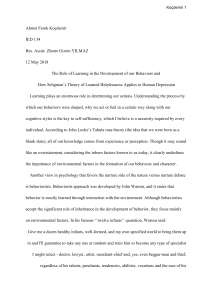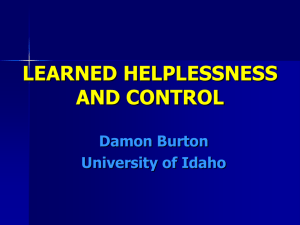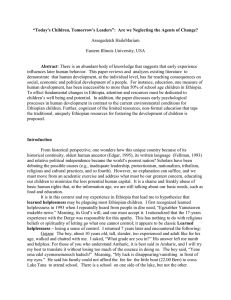seligman
advertisement
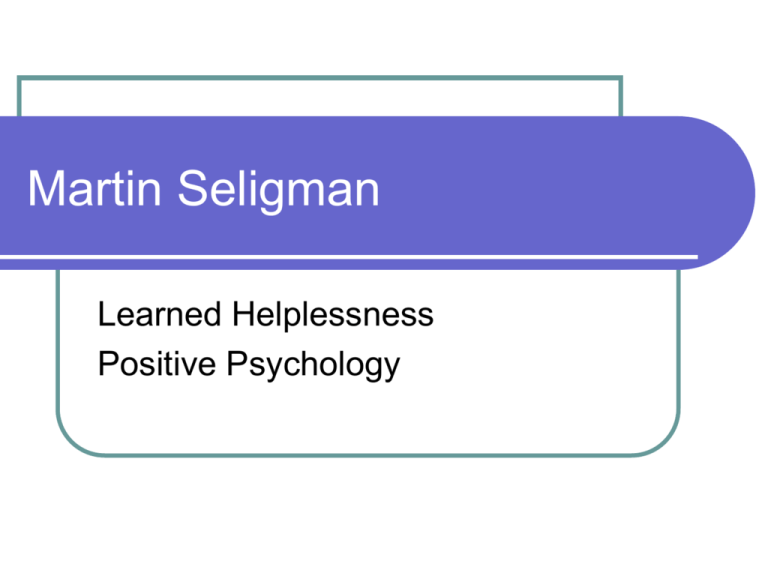
Martin Seligman Learned Helplessness Positive Psychology Learned Helplessness Condition resulting from the perception we have no control over the environment Lab experiments on dogs Conditioned: High pitched sound w/ shock Large box w/ 2 compartments Shock delivered on 1 side of box Dog needed to jump over barrier to escape shock Learned Helplessness Experiment results: Dogs did not cross barrier Lied down and took the shock During part 1 of study, dogs learned they were helpless to avoid the shock paired with the noise Futility of escape Research Support Loud noise experiment No correct sequence of steps to stop the noise Observation of helpless models Elderly patrons in nursing home Those with more control over the situation were happier and more physically active Explanatory Style Way of explaining to ourselves our relative lack of control over the environment Optimistic More likely to have better immune system functioning, live longer, report less stress and depression when compared to pessimistic Pessimistic Depression Association between learned helplessness and depression Symptom: Inability to control outcomes Ultimate pessimism Formulate explanations about negative situations into personal and pervasive terms Attribution Model We attribute our lack of control or failure to some cause Pessimists: Internal, stable and global causes Optimists: External, unstable and specific causes Development of Learned Helplessness in Childhood Particularly vulnerable as infants and children Early interactions with environment will determine later feelings of control over environment Consistency of response from externals Positive Psychology Deals with happiness, excellence and optimal human functioning Critical of older approaches that focused on deficits The Happy Personality Subjective well-being/ Life satisfaction Cognitive evaluation of the quality of one’s life experiences and the possession of positive affect Happiness has both rational and emotional aspects Who are the Happy Personalities? Money Absence can lead to unhappiness Having significantly beyond what is needed does not increase happiness Health Necessary, but not sufficient Who are the Happy Personalities? Age and gender Little bearing Age and subjective well-being Positive relationship between life satisfaction and orientation to the future Satisfaction maintains across the lifespan Happy Personalities Social support Job satisfaction and level of education Older married persons happier than unmarried Modest correlation with happiness National wealth Citizens of wealthier nations happier Personality Factors in Happiness Big 5: Low neuroticism, high extraversion and conscientiousness Autonomy, competence, self-esteem Self-acceptance Environmental mastery 6 Variables Associated with the Happy Personality Repressive-defensiveness Trust Internal locus of control Hardiness Emotional stability and positive affect Self-esteem Contributions of Seligman Concept of learned helplessness Relation to variety of domains Reiterate positive psychology Focus on strengths over weaknesses

